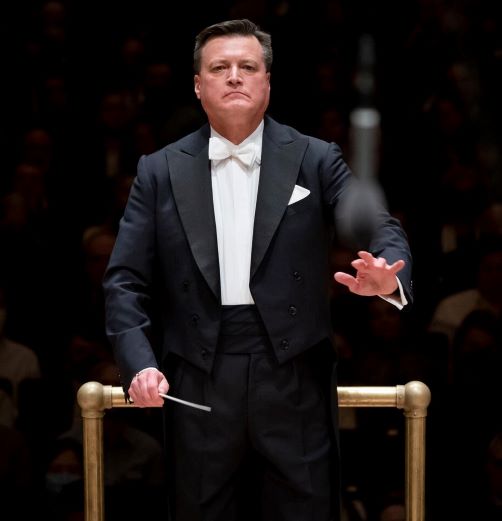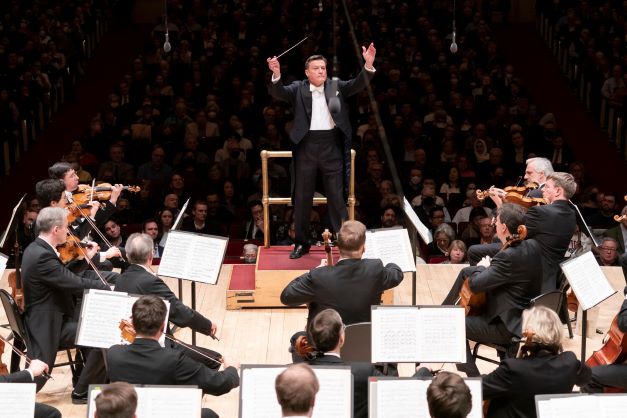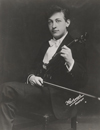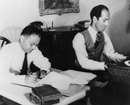Reviews
An Austro-German Weekend by the Experts
 When the Vienna Philharmonic last appeared at Carnegie Hall, it was announced one day before the first of its three concerts, on February 24—the first day of the Russian invasion--that Yannick Nézet-Séguin would replace the scheduled Valery Gergiev, who is closely connected to Vladimir Putin. The three programs, which consisted almost entirely of Russian music, remained the same.
When the Vienna Philharmonic last appeared at Carnegie Hall, it was announced one day before the first of its three concerts, on February 24—the first day of the Russian invasion--that Yannick Nézet-Séguin would replace the scheduled Valery Gergiev, who is closely connected to Vladimir Putin. The three programs, which consisted almost entirely of Russian music, remained the same.
Last Friday (March 3), the orchestra returned to Carnegie, again offering three consecutive concerts but this time of music drawn entirely from the Austro-German canon and led by a conductor steeped in that tradition, Christian Thielemann. If last time the orchestra triumphed by demonstrating its ability and that of Nézet-Séguin to respond to a crisis, this time it reached supreme artistic heights by performing, as planned, music it has in its blood, much of it hugely demanding.
With one major exception, the music originated in the 19th century, post-Beethoven and Schubert. The exception was Strauss’s massive Alpine Symphony, composed between 1911 and 1915 and played in the first concert along with Schoenberg’s Verklärte Nacht. Another titanic work, Bruckner’s Symphony No. 8 in C minor, brought the series to a close on March 5. In between came two works by Mendelssohn, the Hebrides Overture, and the Symphony No. 3 in A minor, Scottish, plus Brahms’s Symphony No. 2 in D major.
Experts climb the Apine
The 51-minute Alpine Symphony is rarely performed, ostensibly because of its reputation as overblown, which, frankly, is hard to counter. As Jack Sullivan states in his excellent program notes, the Alpine Symphony was considered old-fashioned when it appeared, given advances by Debussy, Stravinsky, and Schoenberg. But the real reason for the neglect of what counts as Strauss’s last tone poem is, one senses, the extreme difficulty of replicating a performance as glowing, polished and, indeed, spectacular as Friday evening’s. Much of Strauss’s panoramic account of a climbing expedition is bound to appeal to any devotee of the composer, as if one were encountering an old friend, such as the mysterious, Frau ohne Schatten-like sonorities of “Night” or the solo string passages and Neo-Classicism of “Entry into the Forest” that recall Ariadne auf Naxos. Conducting from memory here and throughout, Thielemann had the work’s numerous episodes, both going up and coming down the mountainside, with their climaxes and moments of repose, methodically and arrestingly calibrated in a dazzlingly conceived and executed performance.
The Alpine Symphony was prefaced by a gorgeous account of Verklärte Nacht (Transfigured Night)—a smart programming decision that allowed the superbly rich-toned string section to shine on its own. Especially telling were the contrasts between the full section and solo episodes, which are even more effective in the orchestral version than in the original, sextet incarnation. It needs to be noted that the orchestra has magnificent wind players as well, who were heard to fine effect elsewhere, en masse and in solos.
Mendelssohn and Brahms
The Mendelssohn content of the second concert, which united pieces inspired by a trip to Scotland, might be thought of as a sort of grand Mendelssohnian scherzo positioned between the outer concerts. Thielemann and the orchestra brought out the expressive simplicity of the symphony’s slow movement. And the conductor’s ability to manage transitional passages—a significant asset in his interpretation of the Bruckner—was evident in leading into the last movement’s uplifting coda, with its shift to a lilting yet dignified 6/8 meter.

Christian Thielemann conducted the Vienna Philharmonic at Carnegie Hall, March 3-5
The affability of the Mendelssohn continued with the Brahms. His symphony had an arresting lyricism, not least in the silkiness of the violins in the first movement, that belied any sense of heaviness, a quality punctuated by the rhythm of the movement’s sly close. The performance’s fleetness continued into the last movement, which had a welcome, let-it-rip aspect that enhanced its spiritedness and exuberance.
Anton by the pros
The 83-minute Bruckner on Sunday emerged as the high point toward which the first two concerts led the way. This is a work that seems to gain in majesty and to grow deeper in spirituality as it goes along—not that there is anything lacking in the first movement, which has been likened to the first movement of Beethoven’s Ninth, even if the ascending second theme, with its characteristic triplet, is pure Bruckner. Or with the Scherzo, which Thielemann ensured had an insistence that was almost fearsome.
 Yet, using (as did his mentor, Herbert von Karajan) Robert Haas’s edition of the final, 1890 version (which restored cut passages), Thielemann’s contribution was especially valuable in the arrestingly discursive third movement and the monumental finale, which the composer called “the most significant movement of my life.” Thielemann’s long experience with the Eighth—he recently conducted it with the Chicago Symphony in a rare U.S. appearance—has enabled him to establish a hierarchy for the symphony’s many climactic moments, which often involve massive brass sonorities, in a way that not only showed such moments to superb advantage but also served to define the work’s overall structure.
Yet, using (as did his mentor, Herbert von Karajan) Robert Haas’s edition of the final, 1890 version (which restored cut passages), Thielemann’s contribution was especially valuable in the arrestingly discursive third movement and the monumental finale, which the composer called “the most significant movement of my life.” Thielemann’s long experience with the Eighth—he recently conducted it with the Chicago Symphony in a rare U.S. appearance—has enabled him to establish a hierarchy for the symphony’s many climactic moments, which often involve massive brass sonorities, in a way that not only showed such moments to superb advantage but also served to define the work’s overall structure.
The self-governing Vienna Philharmonic operates without a music director, but if it were to have one, Thielemann would most likely be it, given his closeness to the orchestra and his affinity with the Austro-German tradition. His podium manner with the orchestra reflected an extraordinary degree of confidence, which allowed him often to dispense with time beating in favor of other gestures, such as leaning back to broaden a phrase or making a gentle lurch forward for intensity.
Under normal circumstances the Bruckner Eighth would not be followed with an encore, but it is a tradition for the Vienna Philharmonic to play encores on tour and this time it turned to Josef Strauss’s delightful waltz Sphärenklänge. Josef Hellmesberger, Jr.’s Entr’act-Valse and Eduard Strauss’s Mit Extrapost were encores for the previous concerts.
At the end of his career, Karajan conducted the Bruckner Eighth at Carnegie Hall in one of those legendary performances that, it seems, just about everyone claims to have attended. I suspect that in years to come people will talk about Sunday’s performance in similarly hushed tones.
Top: Christian Thielemann
Bottom: Anton Bruckner
Concert photos by Jennifer Taylor
Classical music coverage on Musical America is supported in part by a grant from the Rubin Institute for Music Criticism, the San Francisco Conservatory of Music, and the Ann and Gordon Getty Foundation. Musical America makes all editorial decisions.





 FEATURED JOBS
FEATURED JOBS

 RENT A PHOTO
RENT A PHOTO


